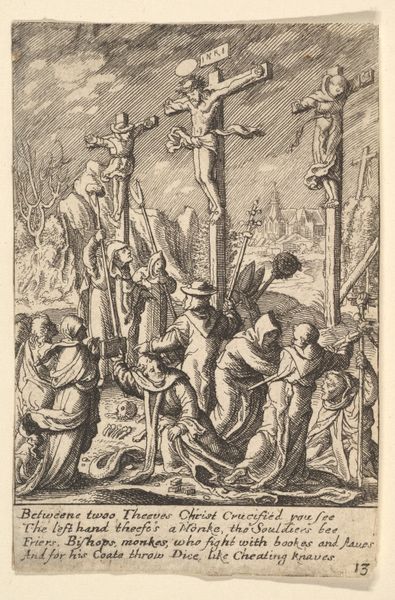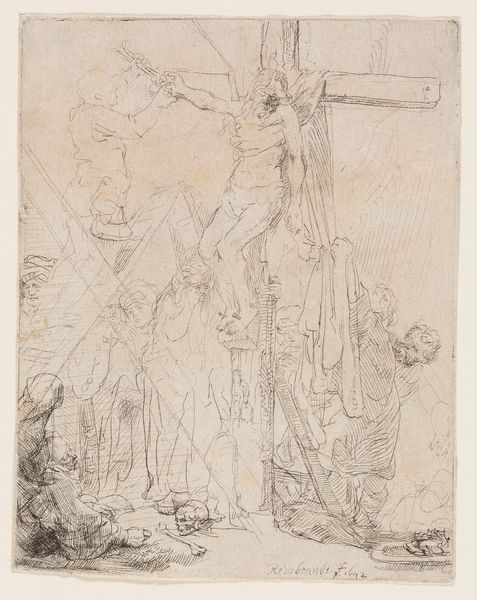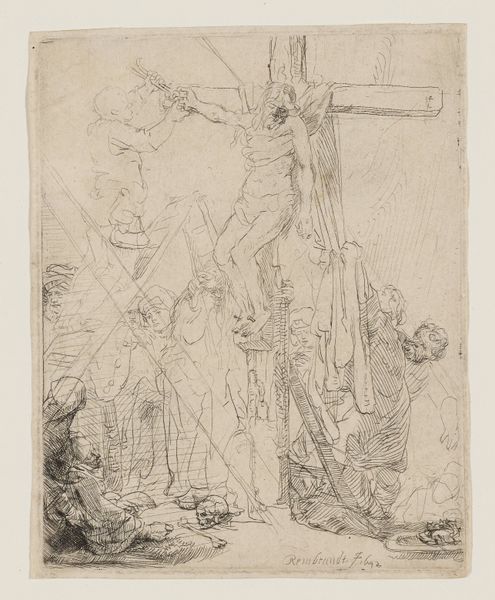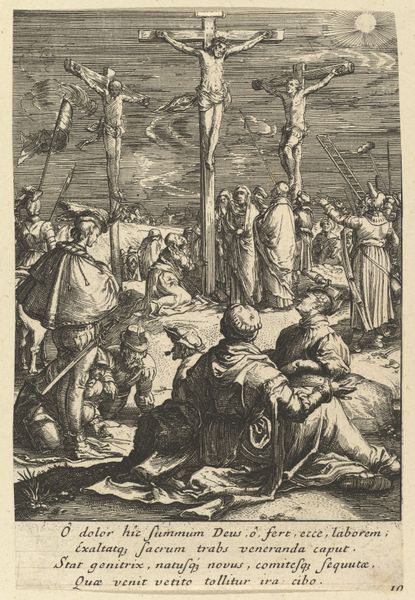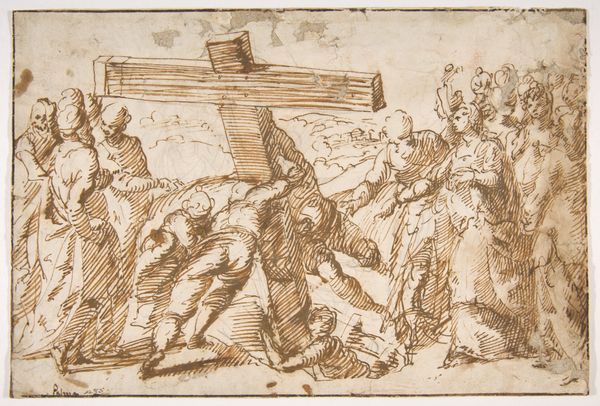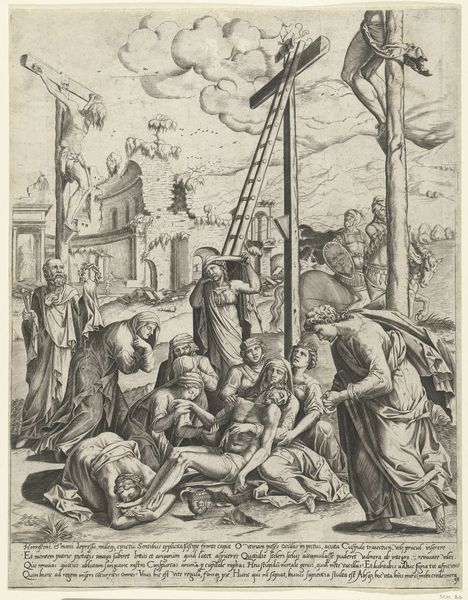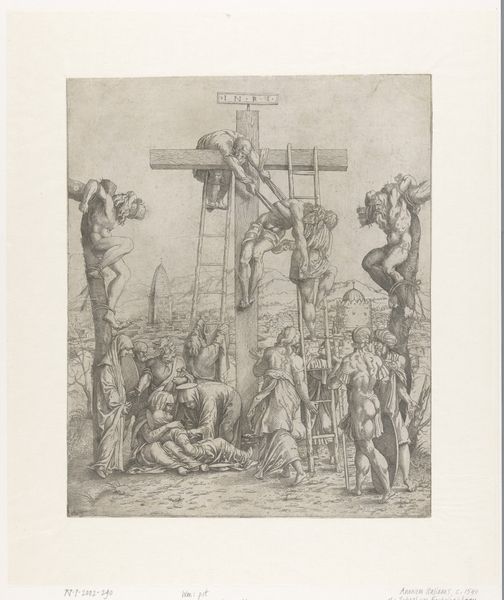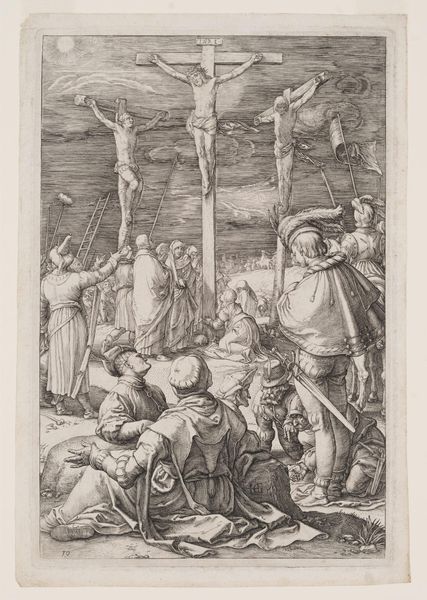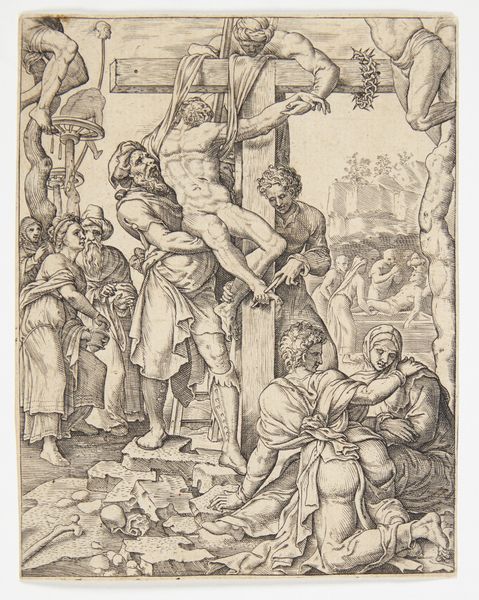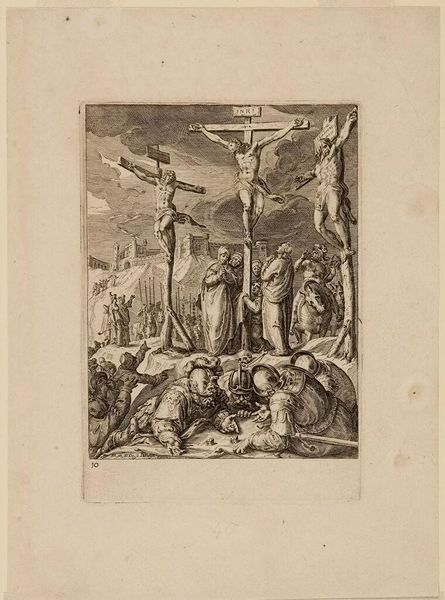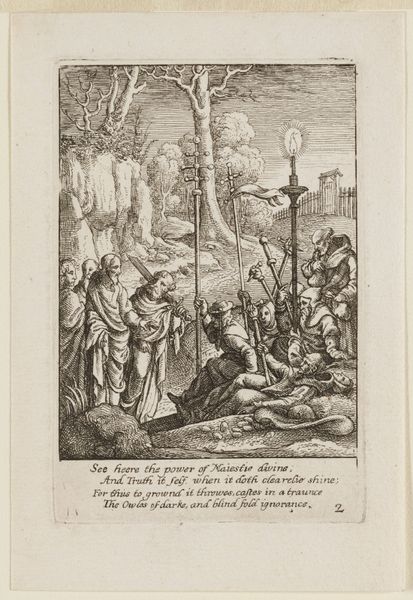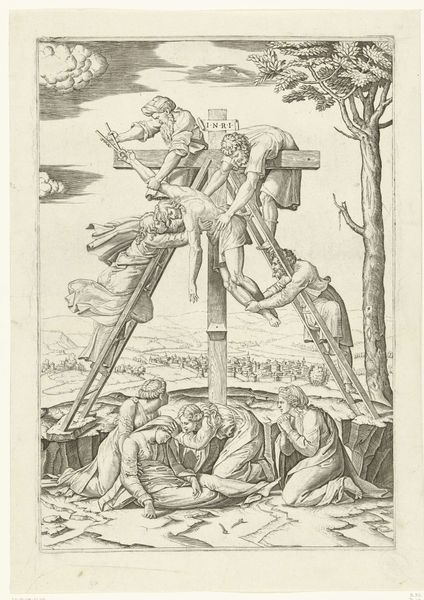
print, etching, engraving
#
baroque
# print
#
etching
#
figuration
#
history-painting
#
engraving
Dimensions: 3 11/16 × 2 7/16 in. (9.37 × 6.19 cm) (image)4 5/8 × 3 1/8 in. (11.75 × 7.94 cm) (sheet)
Copyright: Public Domain
This is ‘The Crucifixion,’ an engraving made by Wenceslaus Hollar, a prolific and skilled printmaker of the 17th century. He used a technique called etching. The artist covers a metal plate with a waxy, acid-resistant coating, then scratches the design into the coating, exposing the metal. The plate is then bathed in acid, which bites into the exposed lines. Consider the labor involved in producing this image, not to mention the many other prints Hollar made during his career. The qualities of line and tone, achieved through careful control of the etching process, give the image its distinctive character. Printmaking was a key technology in the early modern period, allowing for the relatively quick and inexpensive reproduction of images and ideas. Hollar's prints allowed for the wide dissemination of visual information, contributing to the development of public opinion and the spread of knowledge. Understanding the making of this print helps us appreciate its role in the broader social and cultural context of its time.
Comments
No comments
Be the first to comment and join the conversation on the ultimate creative platform.
